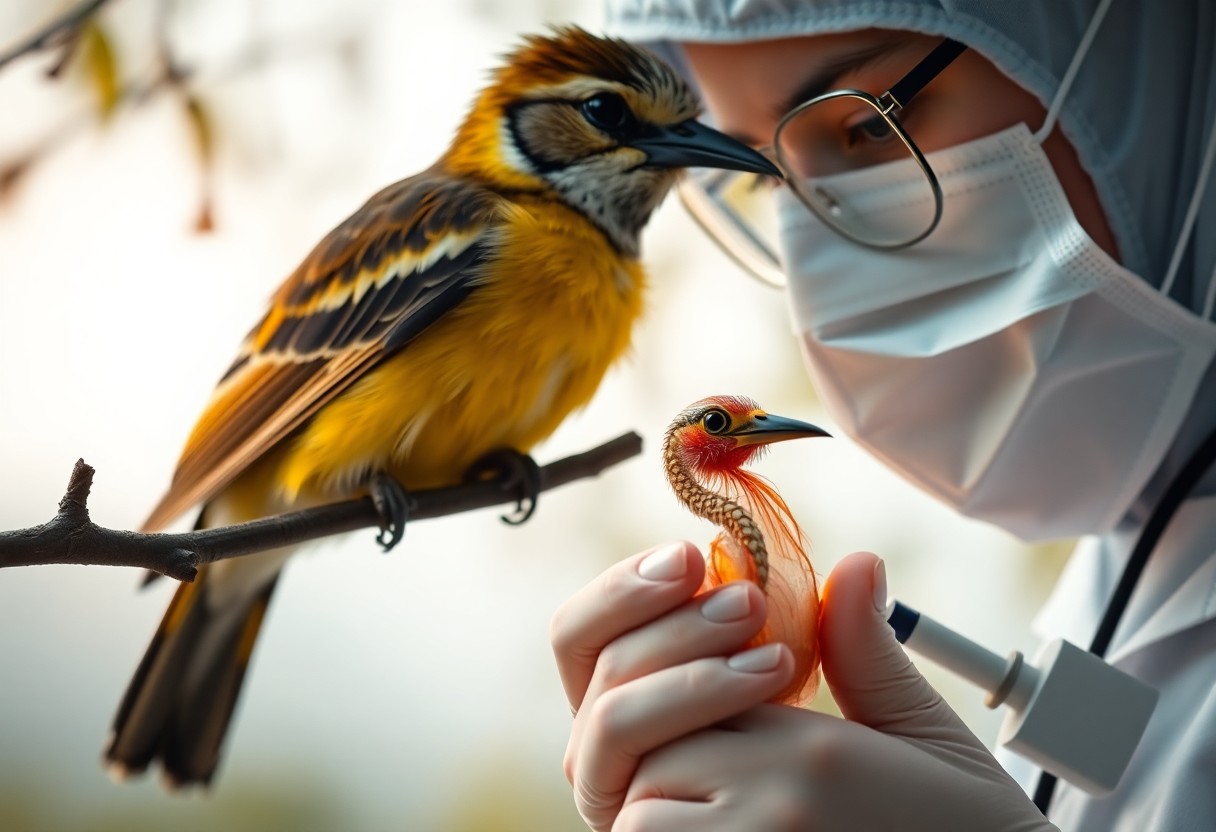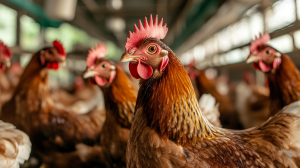You might be wondering about the current level of threat posed by the H5N1 strain of bird flu, particularly as it has been circulating in the United States since 2022. While the general public’s risk remains low, recent trends indicate a growing potential for spillover infections and mutations that could affect humans. It’s important for you to stay informed about the situation, especially if you are in contact with poultry or livestock, as understanding the risks can help you make better decisions for your overall health.

Current Status of Bird Flu
For individuals concerned about bird flu, it is important to note that the H5N1 strain has been circulating in the U.S. since 2022, with an increasing risk of transmission to humans. While the public health risk remains low for most, ongoing changes in the virus and its transmission patterns warrant attention, especially for those in close contact with infected animals.
Global Spread and Transmission
Around the world, bird flu has increasingly jumped from infected poultry to humans, raising alarms among experts. Ongoing outbreaks have been reported on farms, with notable spillover events from both poultry and dairy cattle, highlighting the potential for further transmission and adaptation of the virus.
Recent Mutations and Variants
Against the backdrop of these outbreaks, emerging variants like the H5N9 subtype and H5N1 D1.1 have been detected, raising concerns about their ability to infect humans more effectively. Health experts suggest that these mutations could enhance the virus’s adaptation to human hosts, necessitating continuous monitoring.
And as the virus mutates, it becomes increasingly important for you to stay informed about its variants. The emergence of new subtypes, such as H5N1 D1.1 reported in Nevada, indicates that the threat level is not static. As variants evolve, so does the potential risk they pose to human health, necessitating proactive measures and public awareness to prevent potential outbreaks.

Risk Assessment
There’s a growing concern among health experts regarding the H5N1 bird flu virus as it continues to circulate in the U.S. While the public health risk remains low for most, the accelerating transmission and potential for mutation warrant attention. Reports of spillover events from infected birds to livestock and humans underline the significance of monitoring and preparedness against possible future threats.
General Public Health Impact
Public health experts emphasize that, for most people, the risk of contracting bird flu is minimal. The virus primarily spreads to individuals who have close contact with infected animals, so routine precautions are generally sufficient for the average person. Adhering to existing guidelines and avoiding contact with sick animals can help keep you safe.
High-Risk Population Groups
The groups at greater risk include farm workers and those frequently interacting with livestock. If you belong to a high-risk population, taking protective measures such as using personal protective equipment and avoiding contact with sick animals is advisable. Increased awareness and readiness become important for those in agriculture or animal husbandry.
Consequently, it’s vital for high-risk individuals to stay informed and proactive in their health practices. With evidence of ongoing viral spillover, such as the H5N1 D1.1 genotype detected in Nevada, you should consider additional precautions. Ensure that you are aware of the symptoms of bird flu and report any unusual animal behavior or illness to local health authorities promptly. Your vigilance can significantly reduce the risk of infection.
Food Safety Concerns
The ongoing spread of the H5N1 strain of bird flu raises important food safety concerns, particularly regarding the consumption of eggs and dairy products. While the general risk to the public remains low, ensuring proper food handling and preparation is necessary to minimize any potential exposure to the virus.
Egg Consumption Guidelines
Above all, you should ensure that you cook eggs thoroughly. The CDC recommends avoiding raw or undercooked eggs, as cooking significantly reduces the risk of potential contamination. By following these guidelines, you can safely enjoy eggs without undue concern during this outbreak.
Dairy Products Safety Measures
Concerns about dairy products arise due to the potential prevalence of the bird flu virus in milk. You should avoid consuming raw (unpasteurized) milk, as the virus has demonstrated the ability to replicate in cow’s milk. Pasteurization effectively kills the virus, making it safe for consumption.
This means that if you consume dairy, opting for pasteurized products is the best choice to safeguard your health. Keeping informed about any updates on dairy surveillance strategies helps ensure you’re making safe decisions regarding dairy consumption, especially given the recent detection of H5N1 D1.1 in Nevada. Prioritizing pasteurized dairy products will help you enjoy these foods while mitigating health risks.
Prevention and Control Measures
Not only is it important to remain vigilant about bird flu, but implementing effective prevention and control measures can significantly reduce risks. Currently, the main strategies involve testing infected farms, culling affected flocks, and monitoring livestock. While the general public’s risk is low, staying informed and practicing safe food handling can help minimize concerns in your community.
Agricultural Monitoring
Before virus transmission can escalate, agricultural monitoring plays a key role in detecting outbreaks early. Farmers and livestock handlers should report unusual illness in animals, and states are working on testing programs to ensure the health of their flocks and herds. By taking these proactive steps, you contribute to ongoing efforts to limit the spread of bird flu.
Public Health Surveillance
Surveillance is imperative for keeping the public informed about potential health risks. The CDC is actively testing human influenza cases to identify if H5N1 is present, and wastewater monitoring is being conducted to track the virus’s activity in the environment. This coordinated approach allows you to remain aware of any health threats that could impact your area.
Further measures include analyzing trends in animal populations and monitoring reported cases among workers in contact with livestock. By optimizing public health surveillance, you are better equipped to understand the state of avian influenza and its potential risks. Such initiatives not only help protect livestock but ultimately enhance your overall health and safety.
Comparative Risk Analysis
All health threats must be evaluated in context. Below is a comparative assessment of avian influenza and seasonal flu to help you understand their relative risks:
| Type of Virus | Public Health Risk |
|---|---|
| Bird Flu (H5N1) | Low for the general public, higher risk for those in close contact with infected animals. |
| Seasonal Influenza | Higher risk, common with significant annual impacts on public health. |
Bird Flu vs. Seasonal Influenza
Beside seasonal influenza, which affects millions annually, the bird flu virus primarily impacts those in direct contact with infected animals. While the risk remains low for the broader population, vigilance in managing exposure to sick birds or livestock is advisable for those in high-risk categories.
Current Threat Assessment
Against this backdrop, the current threat posed by H5N1 remains low for most of you, particularly outside of farming environments. The CDC continues to monitor cases, focusing on those with direct animal interactions, while the seasonal flu poses a more immediate concern, particularly with rising infection rates observed this year.
Threat levels from bird flu have risen due in part to reports of mutations like H5N9 and H5N1 D1.1, potentially raising adaptation risks to humans. Nevertheless, public health experts emphasize that seasonal influenzas represent a more significant, immediate threat to your health. Ensuring flu vaccinations and practicing good hygiene can substantially mitigate seasonal influenza risks.
Government Response
Unlike previous outbreaks, the government is now implementing more sophisticated measures to mitigate the threat of bird flu. Authorities recognize the potential for viral mutations and heightened transmission risks. As concerns rise, a coordinated response is vital to safeguard both animal and human health. While some measures have been criticized for being reactive rather than proactive, ongoing strategies are being refined to address the situation effectively.
Current Containment Strategies
After detecting increased cases of bird flu in livestock, the government has quickly employed containment strategies, including culling infected flocks. This measure aims to prevent further virus spread, particularly in poultry, where flocks are highly susceptible to rapid infection. By focusing on immediate action, authorities seek to preserve the integrity of the national food supply and mitigate potential risks to public health.
Surveillance Programs
Containment efforts are supported by comprehensive surveillance programs aimed at early detection of the virus in both poultry and dairy cattle. These programs employ testing in bulk milk tanks and routine farm inspections to identify potential outbreaks before they escalate.
Government officials understand the importance of active surveillance in preventing outbreaks from becoming widespread. By tracking cases among livestock and monitoring wastewater for signs of the virus, you can be assured that measures are in place to minimize risk. The implementation of these surveillance programs not only protects animal health but also plays a vital role in safeguarding human health, especially amidst growing concerns about mutations that could enhance cross-species transmission.
Bird Flu Risk: What’s the Level of Threat?
On the whole, while the threat of bird flu, particularly the H5N1 strain, is growing due to increased transmission and potential mutations, your risk as a member of the general public remains low. If you are not in close contact with infected animals, there’s little need for major changes to your routine. However, staying informed and practicing recommended precautions can help safeguard your health. Always cook eggs thoroughly and avoid consuming raw milk to mitigate any potential risks associated with bird flu.


